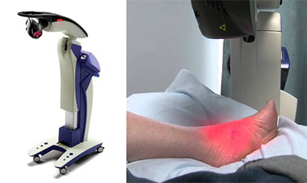 Patients who are overweight may notice they frequently experience foot pain. This can be a result of the added weight the feet must endure on a daily basis. Additionally, there are uncomfortable foot conditions that may develop which can include plantar fasciitis, arthritis, and tendinitis. These can compromise the ability to complete daily activities. Obese patients may have flat feet, and this may produce considerable pain and discomfort. Other medical conditions that can develop from being overweight are gout, diabetes, and circulation ailments. If you have questions about how obesity can affect the feet, it is strongly advised that you seek the counsel of a podiatrist.
Patients who are overweight may notice they frequently experience foot pain. This can be a result of the added weight the feet must endure on a daily basis. Additionally, there are uncomfortable foot conditions that may develop which can include plantar fasciitis, arthritis, and tendinitis. These can compromise the ability to complete daily activities. Obese patients may have flat feet, and this may produce considerable pain and discomfort. Other medical conditions that can develop from being overweight are gout, diabetes, and circulation ailments. If you have questions about how obesity can affect the feet, it is strongly advised that you seek the counsel of a podiatrist.
The more you weigh, the harder your feet must work to support your body. If you’re an obese individual and are concerned about your feet, contact one of our podiatrists from Canonsburg Podiatry Associates. Our doctors can provide the care you need to keep you pain-free and on your feet.
Obesity and Your Feet
People who are overweight are putting more pressure on their ankles, knees, and hips as well as their feet. This unfortunately can lead to variety of different issues.
Problems & Complications Stemming from Obesity
- When the body is overweight, it tries to compensate by changing the way that it moves. An obese person may lean forward and put extra weight on the wrong part of the foot. This puts unnecessary stress on the feet.
- Obese people are also more likely to develop type II diabetes which is a condition that causes a lot of foot problems. People with diabetes often don’t feel the cuts and sores that they may have on their feet, which can lead to more complicated and severe issues.
- Plantar fasciitis is another foot condition that can be caused by obesity. Plantar fasciitis is an inflammation of the tissue along the bottom of the foot, which causes pain and stiffness while walking and climbing stairs.
If you have any questions, please feel free to contact our office located in Canonsburg and McMurray, PA . We offer the newest diagnostic and treatment technologies for all your foot care needs.









